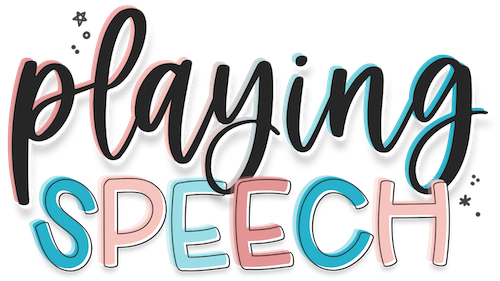Intrusive Schwa and Children with Childhood Apraxia of Speech
Childhood Apraxia of Speech and Intrusive Schwa
What is intrusive schwa? It’s when a child inserts or produces the schwa sound in a word where it normally should not be. The occurrence of intrusive schwa is frequently seen in children diagnosed with childhood apraxia of speech.
A use of the schwa sound where one would not expect is sometimes seen in typical speech development. We call this phonological pattern epenthesis. However, the use of schwa becomes problematic when the schwa is pervasive. And, by pervasive, I mean when it occurs in many different words and/or places of words, and for a longer period of time than we would expect.
Where can we see intrusive schwa?
at the end of a word (e.g. “up” is “up-uh”) - this is often called “word final schwa”
in between the elements of an initial cluster (e.g. “blue” is “buh-loo”)
in the middle of a word (e.g. “dad” is “duh-ad”)
So what do we do when we see intrusive schwa in a child’s speech? Here are a few tips for how to treat intrusive schwa:
Tips to Treat Intrusive Schwa at the End of Words
Elongate the vowel: Elongate the vowel before the final sound. This gives the child more time to motor plan/sequence the final phoneme. More time to reach the articulatory configuration needed for the final sound may help eliminate the schwa!
Try a voiceless fricative or a nasal as the final sound: Firstly, voiceless sounds seem less likely to lead to an intrusive schwa. Secondly, fricatives and nasals allow the child to hold out the final sound, which may also help eliminate the intrusive schwa.
Use visual cues: Use a visual cue to show the child to stop producing speech at the end of the word. I like a hand motion - like “stop.” You can use a stop sign visual. You can also use a marker and whiteboard. Drag the marker across the white board while producing the final sound and stop the marker when the sound ends!
Tips to Treat Intrusive Schwa in Clusters
Elongate the initial sound in the cluster: If the cluster starts with a fricative like /f/ or /s/, elongate the first sound so the child has time to get to the articulatory placement for the second sound in the cluster.
Use a verbal cue: I like to tell my clients to “smash” the sound together or to “say both sounds at the same time".
Get the articulatory placements ready: If the child is going to attempt a cluster like “BL” or “KL”, have the child get the tongue in position for the /l/ sound BEFORE they start to produce the cluster.
Tips to Treat Intrusive Schwa in the Beginning of Words
Don’t bounce sounds: If the word is “dad”, do not model “duh, duh duh dad” for the child. You are modeling that intrusive schwa for them to copy!
Use a visual cue: I like to use hand cues to show the FLOW or the MOVEMENT of speech from the initial sound to the vowel. For example in a word like “dad", I start with my hand up high for the /d/ placement and fluidly move it down to mimic the mouth opening for the “a” vowel.
Talk about the movement of speech: Remind the child that speech is movement and speech is fluid. We “blend” our sounds together smoothly. Use whatever verbal cues or metaphors make sense to you and the child.


